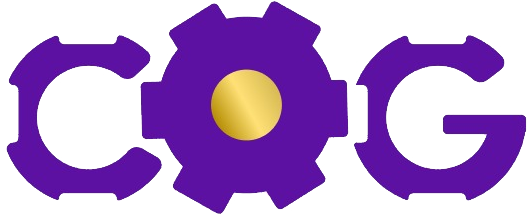Onboarding and Orientation: Setting the Stage for Success in the Employee Lifecycle
Welcome! If you’re reading this, it means you’re interested in refining your company’s onboarding and orientation process. Congratulations, you’ve come to just the right place! In this blog post, we will discuss the ins and outs of onboarding and orientation and provide you with essential tips to maximize employee success and enhance the employee lifecycle in your organization.
Definition of Onboarding and Orientation
Before we venture into the details, let’s get our terminology straight. Onboarding is a comprehensive process involving managing the necessary steps and tasks that new hires need to take before and after starting their new position. On the other hand, orientation is an introduction period where new hires learn about the company culture, policies, and their specific roles. It serves as the employee’s initial impression of the organization.
Importance of Effective Onboarding and Orientation in the Employee Lifecycle
Now, why is a successful onboarding and orientation essential in the employee lifecycle? It’s simple. Effective onboarding sets up new hires for success, increasing their productivity, job satisfaction, and long-term retention. Plus, it can significantly lower turnover rates, leading to cost savings for your company in the long run. The focus of a good onboarding and orientation process is not just to ‘inform’ but to ‘engage’ and ‘integrate’ new hires into the organization. Stay tuned as we cover some best practices and strategies for your onboarding and orientation program next.
Benefits of Effective Onboarding and Orientation
Proper onboarding and orientation can bring several benefits to your organization. Let’s delve into what’s in it for you as an employer and for your new hires.
Increased Employee Engagement and Retention
Strong onboarding programs can significantly boost engagement, fostering a stronger connection between the employee and the company. This helps to reduce early turnover, saving you valuable resources and time.
• Stabilizes the workforce by reducing initial turnover
• Encourages active participation & loyalty
• Gives new hires the feeling of being valued and accepted
Improved Productivity and Performance
A well-structured orientation program can significantly enhance employee productivity and performance. Employees can hit the ground running if they know what’s expected of them right from the beginning.
• Shortens learning curves
• Provides clarity on job roles and responsibilities
• Enables new hires to contribute quickly
Faster Integration into Company Culture
Effective onboarding helps new hires understand and embrace the company’s culture faster, fostering a sense of belonging.
• Educates new employees about company values and work ethics
• Gives rise to a more supportive work environment
• Makes employees feel comfortable and welcome
Enhanced Employee Satisfaction and Success
Last but not least, a great onboarding program promotes employee satisfaction, ultimately leading to their long-term success in the organization.
• Ensures alignment between employee’s personal goals and the company’s objectives
• Facilitates open communication & feedback
• Causes a sense of personal fulfillment & career growth.
These benefits show why investing in employee onboarding and orientation is not just essential, but an investment in the future success of your business.
Preparing for the Onboarding Process
A successful employee onboarding doesn’t materialize out of thin air. It requires careful planning, involvement from multiple departments, and the right resources. Here are some steps you can follow to ensure your onboarding goes as smoothly as possible.
Developing a comprehensive onboarding plan
A well-defined onboarding plan is the first step to onboarding success. The plan should outline all tasks and activities new hires need to undertake during their onboarding process. It should be designed to help them understand the company culture, meet the team, learn about the company’s policies and products, as well as their roles and responsibilities.
Identifying key stakeholders and roles
– Human Resources: Responsible for ensuring all essential paperwork is completed.
– Direct managers/Supervisors: Closest point of contact for the new employee, guiding their transition.
– Colleagues: Offering peer-level assistance and social integration into the team.
Gathering necessary resources and materials
A worthwhile onboarding program leverages various resources to facilitate learning. This includes the company’s handbooks, procedures and policies, training modules, and feedback tools. Collecting all these materials beforehand saves time and makes the onboarding experience efficient and effective.
Designing an Effective Orientation Program
When it comes to designing an employee orientation program, there are several pivotal elements to consider. Here are some key strategies to follow.
Setting Clear Goals and Objectives
Your orientation program must have clear goals and objectives. Articulate what you want your new hires to take from the program. More importantly, these objectives should align with the overall mission and values of your organization. This could include understanding the company culture, becoming familiar with policies, or grasping fundamental job roles and responsibilities.
Structuring the Program for Optimal Engagement
Structure is crucial for engagement. An overloaded or monotonous program can disengage employees. Instead, incorporate breaks, vary the content, and consider spreading the orientation over a few days or even weeks. This staggered approach allows for better absorption of information and less overwhelm.
Incorporating Interactive Activities and Discussions
Passive presentations alone aren’t effective. Enhance engagement and learning by incorporating interactive activities. This could involve group discussions, Q&A sessions, role-plays, games, or quizzes. Such activities can facilitate a more dynamic and memorable learning experience.
Incorporating a Mix of Company-Wide and Team-Specific Information
A well-rounded orientation program should cover both company-wide and team-specific information. Provide an overview of the company’s mission, values, products, markets, and culture. Simultaneously, deep dive into issues relevant to the new hire’s department or team. This balanced approach allows the new hire to understand both the big picture as well as their role within it.
Communication and Relationship Building
The heart of effective onboarding and orientation lies in robust communication and relationship building. These processes play a critical role in fostering a supportive and inclusive atmosphere, directly contributing to overall employee success and satisfaction.
Establishing Clear Lines of Communication
Starting from day one, make sure that your new hires know who they can turn to for questions or concerns – this could be their supervisor, a designated mentor, or a member of the HR team. Use a variety of communication platforms, such as email, phone, chat, and face-to-face meetings, to help facilitate these conversations. Inform employees on company protocols and the expected response times for queries.
Fostering Relationships with Colleagues and Mentors
Help your new employees integrate into their team by encouraging both formal and informal interactions with their coworkers. Arrange lunches, team outings, or informal check-ins where they can get to know their colleagues on a personal level. Assign mentors who can provide guidance and build a solid relationship based on trust and mutual respect.
Encouraging Open Dialogue and Feedback
Create a culture that values open dialogue and feedback. Encourage new hires to voice their opinions, discuss their ideas, and provide feedback. Regularly solicit their input on the onboarding process and make tweaks based on their responses. This approach sends a strong message that their contribution is valued and adds to the dynamism of the company culture.
Providing the Right Resources and Tools
An integral part of the onboarding and orientation process involves equipping your new hires with the necessary tools and resources to perform their duties effectively. Without these, employees could feel lost and overwhelmed, hampering their productivity and overall success.
Ensuring Access to Necessary Technology and Equipment
From day one, ensure your new employees have access to the necessary equipment and technology vital for their role. This can include, but not limited to:
– Computers or laptops with necessary softwares installed
– Access to company email and intranet
– Workstation setup with required peripherals
Making these provisions helps reduce downtime and allows your new hires to hit the ground running.
Providing Training Materials and Resources
Training materials and resources provide an important guidepost for your new hires. They ensure that the employees can learn at their own pace and understand each aspect of their role.
Outlining Company Policies and Procedures
Lastly, don’t forget to provide insight into your company’s policies and procedures. These may vary from specific office rules to broader business practices, but it’s crucial for employees to know them to navigate the company culture and meet expectations. Providing a comprehensive operations manual or a digital equivalent is one way to achieve this.
Onboarding and Orientation Best Practices
To ensure your newly hired employees feel connected, appreciated, and motivated right from the start, here are some best practices for onboarding and orientation:
Assigning a Mentor or Buddy System
A great way to aid in the onboarding process is by assigning every new employee a mentor. This helps the newbie become familiar with the company culture, roles, and responsibilities quickly and minimally. The mentor is not just for technical queries but also a go-to person for any informal workplace questions.
Incorporating On-The-Job Training and Shadowing Opportunities
Real-time learning is an important aspect to consider. It can be achieved by incorporating on-the-job training and shadowing opportunities. New employees can shadow seasoned employees to get a hands-on understanding of the work. This can include:
• Participating in live projects
• Attending meetings and client calls
• Learning software and tools
Conducting Regular Check-Ins and Performance Evaluations
New recruits should not feel left unattended. Regular check-ins and performance evaluations are necessary to reassure them and understand their progress. It gives them a platform to voice their concerns, and it helps you learn what’s working and what needs improvement in your onboarding and orientation process.
Evaluating and Improving the Onboarding Process
To ensure the success of your onboarding and orientation process, continuous evaluation and improvement are key. How can you achieve this? Let’s look at a few strategies:
Gathering feedback from New Hires
First, gather feedback from those who have recently gone through the process: the new hires. Their fresh experience can reveal insightful information about the effectiveness of your onboarding steps.
– What are their first impressions of the company?
– How well did the process prepare them for their role?
– Were there any areas they found confusing or frustrating?
Even an anonymous survey can work – the aim is to get honest opinions and viewpoints to give direction to your improvements.
Analyzing Onboarding Metrics and Success Rates
Another critical step is analyzing your onboarding metrics. Look at attrition rates, time to productivity, performance scores, and even engagement levels. Are the new hires who went through a robust onboarding process performing better? The numbers often tell the story.
Making Necessary Adjustments and Improvements
After gathering feedback and analyzing metrics, now’s the time to make adjustments. Perhaps increasing the length of orientation will better prepare new hires. Maybe more real-life task simulations are needed. Or perhaps follow-up support after onboarding is done needs strengthening. Whatever it is, don’t be afraid to adjust your process to ensure employee success.
Effective onboarding and orientation play significant roles in an employee’s career journey. They are not mere formalities, but integral aspects of the work culture that can greatly impact an employee’s productivity and relationship with their organization. They set the tone for:
• Job satisfaction
• Stronger job performance
• Greater commitment to the organization
• Lower turnover
At the end of the day, proper onboarding and orientation prepare employees for success. When organizations take the time and resources to ensure that the onboarding journey is effective and inclusive, they lay a solid foundation for employee success throughout their lifecycle in the organization. Remember, a well-planned onboarding experience speaks volumes about the company’s values, and that is just the first step to foster a long-term and valuable relationship with your employees.






